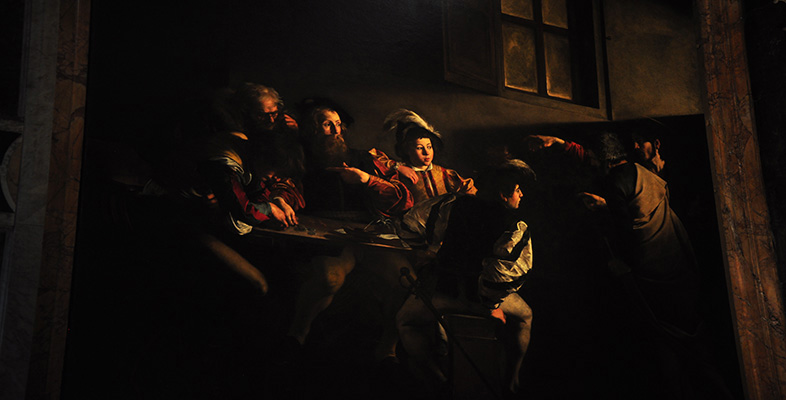2.7 Art, life and the interpretation of pictures
David Carrier's book, Principles of Art History Writing (1991) considers the way that Caravaggio has been constructed as an artistic personality (the relevant chapter is below). The objective of Carrier's book as a whole is to demonstrate that the ‘appeal to the artist's intention adds nothing’ to the interpretation of his artworks (recall the discussion of Wimsatt and Beardsley in Section 2.4), a difficult issue as so much art writing depends on exactly this approach. ‘Because we know much about Caravaggio, it is natural to interpret his art in relation to his life’. Indeed, ‘In principle, a uniquely correct re-creation of an artist's mental states should be possible. In practice, because the evidence is incomplete, that goal may not be achieved. The multiplicity of interpretations of an artwork reflects this unfortunate fact’ (Carrier, 1991, p. 7).
Activity 12
Read Carrier's chapter now.
Click to read the chapter by David Carrier [Tip: hold Ctrl and click a link to open it in a new tab. (Hide tip)] .
Note that Carrier uses the term ‘humanism’ in a very particular way: ‘For the humanist tradition, the goal of art history is to represent the mental states of the artist’ (Carrier, 1991, p. 6). This refers to the ‘humanity’ of art in general rather than to the Renaissance rediscovery of classical antiquity in general.
How do you think Carrier would judge Helen Langdon's interpretation of Caravaggio's painting?
Does her biography provide a structure or a ‘code’ (‘a distinctive way of describing an artwork’) for analysing art?
Discussion
I think that Carrier would approve of Langdon's empirical approach to her subject, although the nature of biography automatically links the interpretation of artworks with the artist, something Carrier seeks to avoid.
Langdon's code – her insistence on primary sources – does impact on the way that artworks can be described in her biography. Boundaries between what is known and what is not are clearly established by recourse to the evidence, though, as considered earlier, there are problems with using ‘Lives’ as sources.
Carrier concludes that ‘how we understand the relation between early and modern art-writing depends on our interpretation of the early accounts’. The early accounts of Caravaggio's life are themselves problematic, subject to literary and cultural conventions. Arguably, all history consists of a dialogue between the past and the present. If it were simply a matter of reconstructing the past then only one book on any person, place or period might be necessary.
If there were such a thing as a complete, final, unquestionable history no one would ever write a book or an article about Caravaggio ever again. This is unlikely because arguably it is not in the nature of history to be complete, final and unquestionable.
